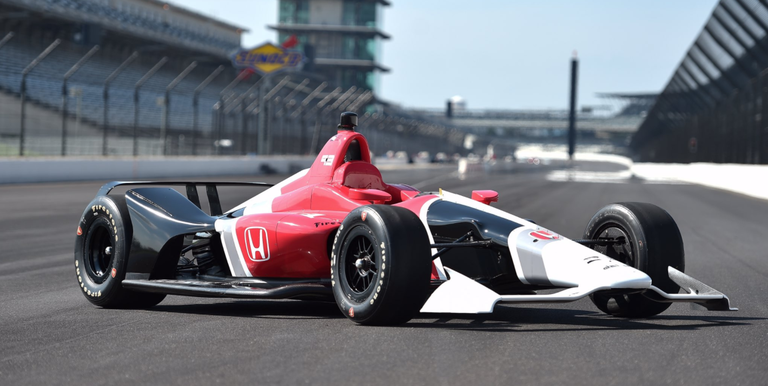Moose wrote: ↑28 Mar 2018, 16:38
So, I had a thought that may or may not be dumb...
The diffuser and rear wing both generate strong vortices that are rotating clockwise on the right of the car, and anti-clockwise on the left. The front wing, creates the Y250 vortex and sets up downforce for the rest of the car. The Y250 vortex needs to rotate anticlockwise on the right hand side of the car, and clockwise on the left hand side, due to the fact that the front wing needs to generate downforce, so it must have high pressure above, and low below; and due to the fact that the central section of the wing is standardised while the outer parts are not.
Suppose that standardisation was inverted - effectively, instead of having a standard aero-neutral centre section of the front wing, have a really narrow front wing... The effect would be that the Y250 vortex would naturally want to rotate clockwise on the right hand side of the car.
Doing this would surely dramatically reduce the amount of downforce lost due to following another car, by causing that car's wake to reinforce desired aero effects of the following car, not counter act them.
I've been trying to keep out of this, but here are my two penneth worth. You're assumption is that the the loss of downforce is from the trailing vorticity, not so, the main contributor to DF loss is the reduction of dynamic pressure (

) reducing surface pressure on the following cars surfaces.
The pressure coefficient is

, where

denotes a freestream variable, and you can calculate the downforce on a wing by
 dx})
. As the car moves through the air it sucks a load of air along behind, so you can essentially predict the reduction in pressure on the following car using
 -\, p_{\infty}}{q_{\infty}})
.
Note: I say essentially because there is an effect from up-wash and local non-uniformity of the airflow, but ~90% of the effect can be attributed to lower dynamic pressure.
Because of the dynamic pressure effect, the pressure on the surfaces is lower (both high and low pressure regions) so downforce is reduced. This will affect the Y250, FWEP, FWUF, bargeboard... etc vortices as the pressure difference is smaller because of the squeezed surface pressures, not because they are cancelled by the trailing vorticity.
Where this velocity deficit (the following car has a lower airspeed over the downforce producing surfaces) comes from is drag, where drag can be calculated from the change of momentum behind the car using,
dA - \int(\Delta U)d\dot{m}\, =\, \int(\Delta P)dA\, -\, \rho U_{x} \int(\Delta U_{x}) dA)
, basically drag is caused by the change in pressure and the change in velocity behind the car.
F1 cars are high drag compared to other series, e.g. Le Mans and Indycar - mainly because of the exposed wheels, but also because of less efficient underbodies and wings. So in 2017 when they made the rear tyres bigger and the diffuser longer, but not planar or convex - the cars got draggier, so the wake effect was amplified. Coupled with the fact that F1 cars generate more downforce than Indycars, it means the effect of the wake is a greater % loss of downforce, which has a bigger impact on the cornering speeds in the wake vs out of it.
So less total downforce, less drag, narrower wheels, maybe covered wheels, narrower cars, a long but straight/convex diffuser, will all most certainly help.
Apologies for the long boring post.



